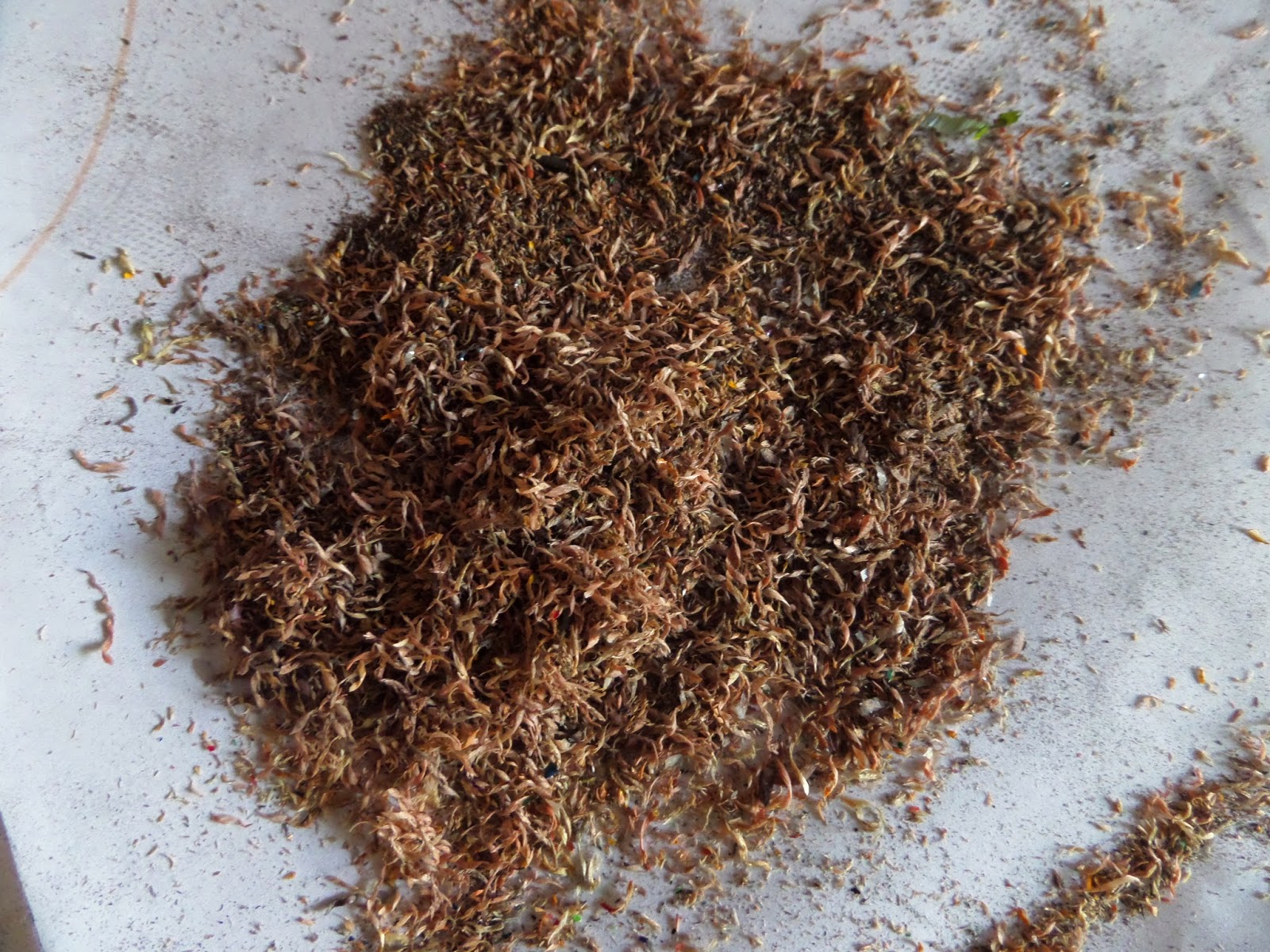I gently took the shavings collecting cup off of the front and we could see that shavings were stuck inside of the hole where the pencil is placed. The students gave suggestions like, "tip it over, dump it out, and see if you can use a pencil to get the rest of the shavings out." Once we were satisfied it was cleaned, we plugged it back in. You could hear a pin drop as we tested it out. It worked and we went back to the pile of shavings.
Teacher- What does it look like?
T- Like a home for a frog.
M- Or a bird.
We decided to save the shavings on our scrap wood shelf to see if we could make something out of them someday. Then, the students went back to working on their portraits. I am trying to use these little problems (that I would've fixed myself without drawing any attention to them in the past) to give them exposure to problem-solving using real world issues. It's enlightening to listen to their suggestions to fix a problem. They are full of ideas.
During open studio time, I pushed into a kindergarten classroom. I was photographing students for their identity walls and one student didn't understand me.
E- He doesn't understand you.
There are many new ESL students, so I suggested to E that perhaps we should use Spanish.
E- He doesn't really talk. Maybe he can't hear us.
Another student, M, then gently touched the new student's arm to help him stand up, so that he would understand through physical demonstration.
E, a very outgoing child, seemed worried that the new student is so quiet. After a quick discussion with Mrs. Call and the kindergarten teacher, we think perhaps a provocation like How can we talk? could open up ideas about other ways of communicating with someone who might be shy to use verbal language, or simply can't use verbal language. I think the sensitivity the students showed to someone new was a good sign that they are developing compassion.
I continued to let the pre-k students work with loose parts to create faces. For those students who have demonstrated this ability, I let them have free time creating with loose parts. I especially enjoyed this one by Josiah:
His teacher will interview him about the piece to see what he's expressing and I'll share that when we find out. (We tried, but he's new at this, so he wasn't comfortable sharing out about his work to a group just yet.)
More loose part fun:
I finished the day with my second graders and then kindergarten again, with both classes working on portraits.






No comments:
Post a Comment